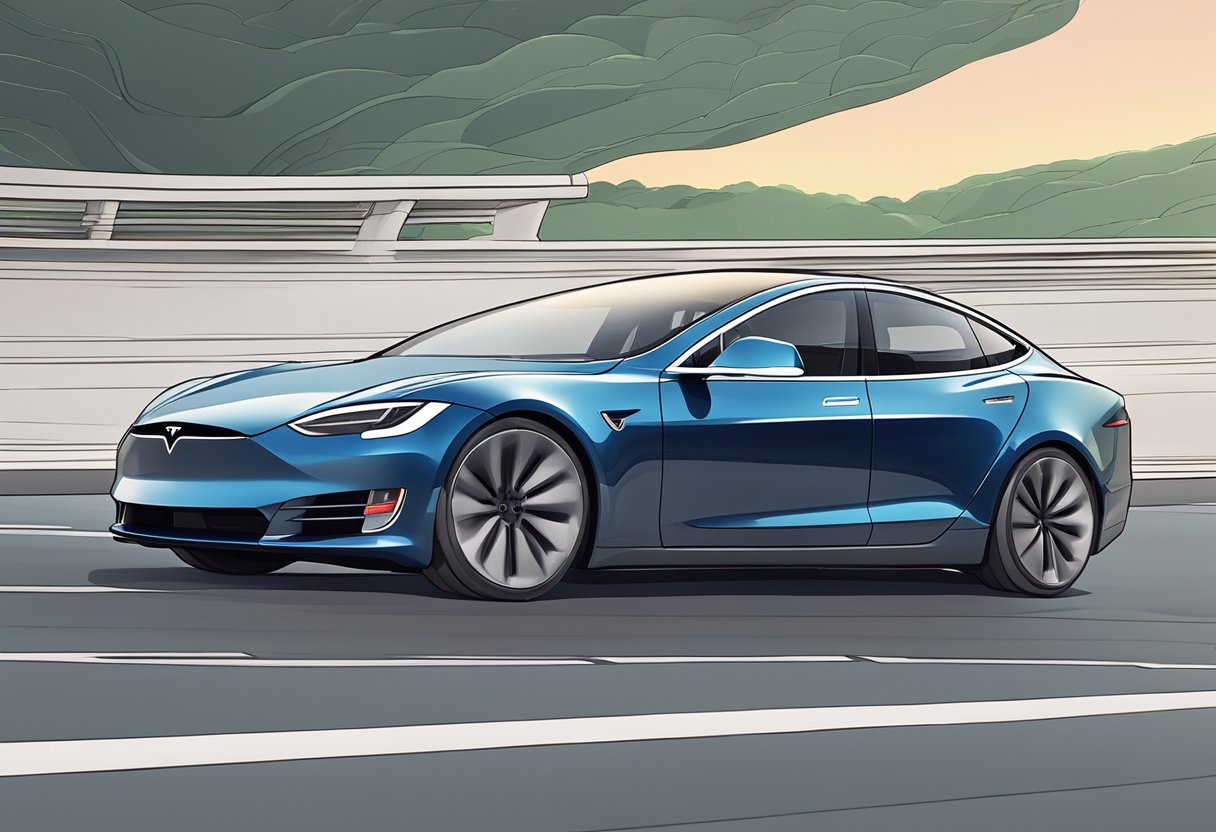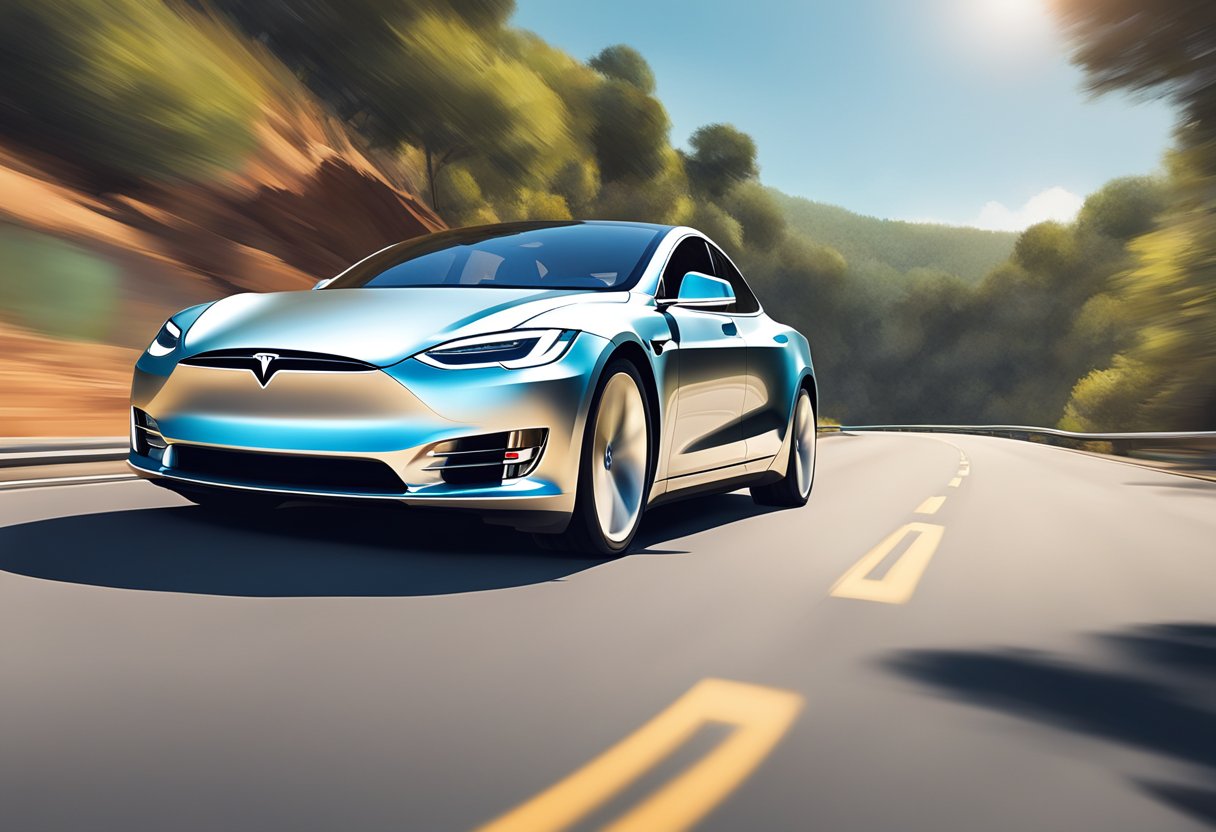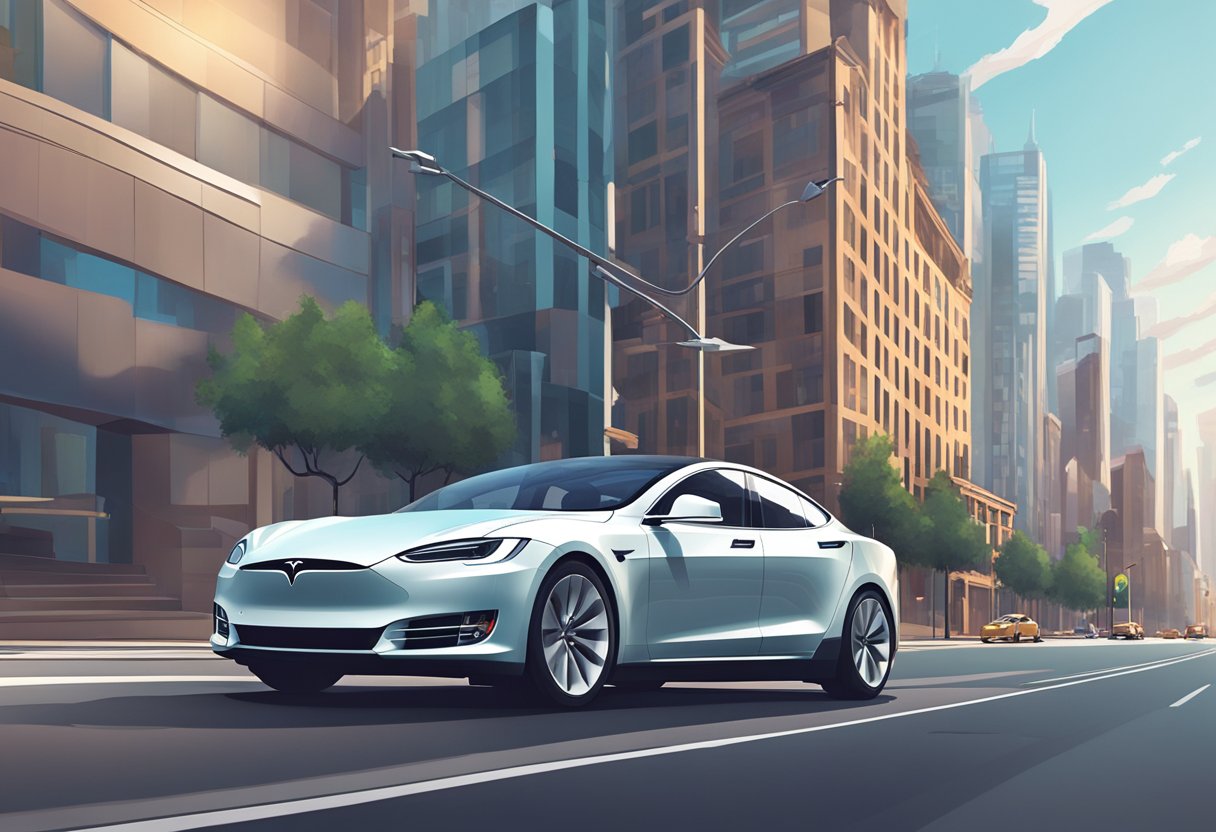Tesla’s advancements in self-driving technology have captured the attention of both car enthusiasts and the tech community alike. The company’s vehicles, equipped with Autopilot and the Full Self-Driving (FSD) suite, offer a glimpse into a future where cars drive themselves. When you engage a Tesla’s self-driving features, the vehicle can perform tasks such as changing lanes, navigating traffic, and adhering to speed limits. However, the term ‘self-driving’ can be a bit of a misnomer, as current regulations and technology require your constant supervision when these features are active.

The degree to which a Tesla can drive itself depends on the environment and the specific functionalities enabled. Tesla’s Autopilot, the base driver-assistance system, provides features like adaptive cruise control and lane-keeping, which reduce driver workload on highways and long drives. On the other hand, the added Full Self-Driving package expands on this, incorporating capabilities like automated parking and Traffic and Stop Sign Control. These sophisticated features use sensors and cameras to read the road, but despite the advanced technology, your Tesla cannot drive ‘fully’ autonomously in the way you might think of from science fiction. Full autonomy, known as Level 5, remains a goal yet to be reached.
Tesla’s Autopilot and Full Self-Driving Technology
In exploring how Tesla vehicles can drive themselves, it’s essential to understand Autopilot and Full Self-Driving (FSD) capabilities and their distinct technologies.
How Does Tesla’s Autopilot Work?
Tesla’s Autopilot is a sophisticated driver assistance system that utilizes a combination of sensors, cameras, and software to offer features like Traffic-Aware Cruise Control and Autosteer. Traffic-Aware Cruise Control adapts the speed of your Tesla to match the surrounding traffic conditions. Autosteer is a feature that assists you in steering within a clearly marked lane.
- Sensors: 360-degree coverage for maximum awareness
- Cameras: Eight cameras providing 250 meters of visibility
- Level 2 Autonomy: Combines both adaptive cruise control and lane-keeping assist
These features represent Level 2 autonomy, where the system assists with driving tasks but requires your constant supervision.
The Progression to Full Self-Driving Capability
Full Self-Driving (FSD) Capability is an advanced autonomous driving system which Tesla engineers are progressively enhancing. FSD strives to eventually enable Teslas to drive themselves at Level 5 autonomy, which implies no driver intervention. Currently, the FSD package offers additional features:
- Navigate on Autopilot: Suggests lane changes to optimize route
- Auto Lane Change: Initiates lane changes while driving on the highway
- Autopark: Helps automatically park your vehicle
If your Tesla is equipped with FSD Computer 3.0 or above, you can use these features or subscribe to the FSD capability to access future improvements. Tesla continues to refine these features towards full autonomy through over-the-air software updates. However, even with FSD, you are required to remain attentive and in control of your vehicle at all times as these systems are not yet autonomous.
Real-World Performance of Tesla Autopilot
In understanding how long a Tesla can drive itself, it’s important to consider not just the capabilities of the Autopilot system, but also its real-world performance as reported by users and observed by regulatory bodies.
Current Limitations on Tesla’s Self-Driving Technology
Autopilot and Full Self-Driving (FSD) Beta use advanced technology to allow some level of autonomous driving, but they come with significant limitations. Despite the moniker “Full Self-Driving”, these systems require active driver supervision at all times. This is a critical point that the National Highway Traffic Safety Administration (NHTSA) and other regulators consistently emphasize.
- Autopilot: Basic features include Traffic-Aware Cruise Control and Autosteer.
- FSD Beta: Adds capabilities like navigating city streets, automatic parking (Autopark), and Summon features.
The NHTSA is closely monitoring the FSD Beta to ensure it meets safety standards, meanwhile, consumer organizations like Consumer Reports have highlighted that the technology is still not fully autonomous and should not be considered a replacement for human drivers.
Reports and Reviews from Tesla Owners and Beta Testers
Tesla’s real-world application of Autopilot and FSD Beta is continually assessed by a community of beta testers. These individuals provide vital feedback on system performance, which includes the ability to recognize and respond to traffic lights, stop signs, and other road conditions.
- Positive Experiences: Some users have reported successful navigation on both highways and city streets without hands-on intervention for extended periods.
- Challenges: Others have cited instances where manual intervention was necessary to correct the system’s course, underscoring the technology’s current limitations.
Tesla owners who opt into the beta testing are essentially agreeing to test the semi-autonomous features at their own cost and risk. This ongoing testing is integral to developing the software and ensuring the system’s safety before any potential widespread release.
Safety and Regulation Compliance

When exploring how long a Tesla can drive itself, it’s imperative to consider Tesla’s commitment to safety features and the regulatory scrutiny it faces.
Tesla’s Approach to Active Safety Features
Tesla equips its vehicles with a suite of active safety features aimed at preventing accidents before they occur. For instance, Automatic Cruise Control (ACC) and Autosteer fall under Tesla’s Autopilot capabilities, providing drivers with support in maintaining speed and lane positioning. Tesla’s Automatic Emergency Braking (AEB) is designed to detect potential collisions and apply the brakes if the driver fails to respond in time. Features like Traffic Light and Stop Sign Control (TLSSC) are meant to interpret traffic controls and navigate urban environments more safely.
With Summon and Smart Summon, your Tesla can autonomously leave a parking space and navigate to your location in a parking lot. While these functions showcase the advancement of Tesla’s technology, it’s crucial to use them responsibly and remain attentive to the vehicle’s surroundings and performance.
Regulatory Bodies and Tesla’s Self-Driving Claims
Regulatory bodies such as the National Highway Traffic Safety Administration (NHTSA) keep a close watch on Tesla’s self-driving claims. The NHTSA has investigated several incidents involving Tesla vehicles and has the authority to mandate a recall if a safety-related defect is found. For instance, there have been recalls for issues related to Tesla’s Autopilot system, highlighting the ongoing scrutiny these advanced systems are subject to.
In some jurisdictions, including a ruling by a German court, Tesla’s marketing terms like “full self-driving” have been contested for potentially misleading consumers about the capabilities of the technology. Tesla’s CEO, Elon Musk, often takes to social media to discuss product capabilities and timelines, but the real-world application must align with regulatory compliance to ensure safety.
Whether you’re driving a Model 3 or a Model S, it’s your responsibility to stay informed about the level of autonomy enabled in your vehicle and the local regulations governing its use. While Tesla continues to advance its technology, the path towards full autonomy is paved with significant regulatory hurdles and safety benchmarks that need to be met.
The Future of Tesla’s Self-Driving Technology

As Tesla continues to refine its self-driving capabilities, your electric vehicle experience is expected to be more autonomous, with enhancements to current functionalities and the roll-out of new features.
Ongoing Improvements and Updates to Autopilot and FSD
Autopilot and Full Self-Driving (FSD) technology have already provided Tesla owners with features like adaptive cruise control, lane keeping assist, and automatic lane changes, which contribute to a semi-autonomous driving experience on highways. Tesla’s commitment to upgrading these systems suggests that these features will evolve, with more seamless integration and performance on a wider variety of roads, including city streets.
The FSD beta, which is a more advanced version of Autopilot, is anticipated to grow and incorporate more nuanced driving tasks. This includes:
- Smart Summon: Your Tesla will come to you in a parking lot.
- Navigate on Autopilot: Planning a route and maneuvering on highways become more adept.
These advancements in Tesla’s autopilot and FSD technology indicate a trend toward greater vehicle autonomy, particularly in electric vehicles (EVs). Tesla’s focus on over-the-air updates means that your electric car will continue to improve in capability after you’ve made your purchase, with these technological improvements being wirelessly delivered directly to your vehicle.

